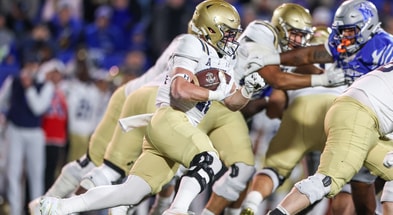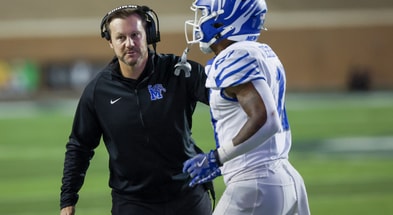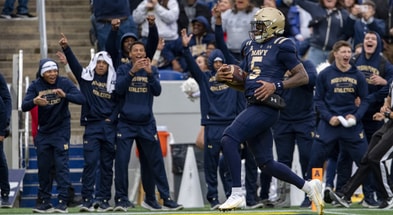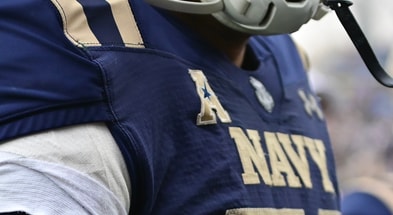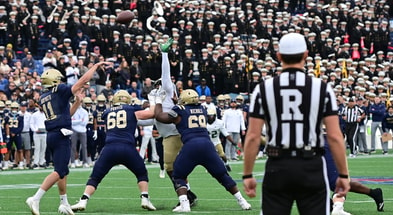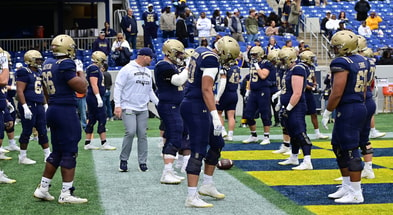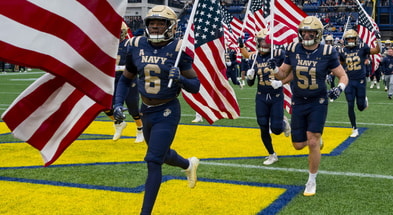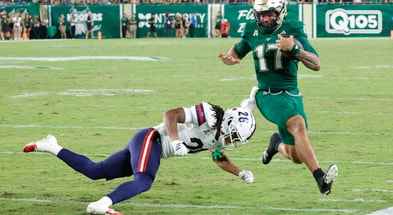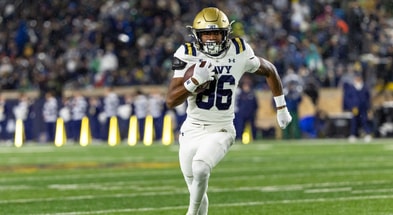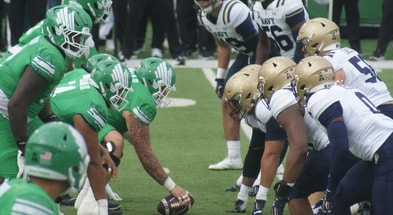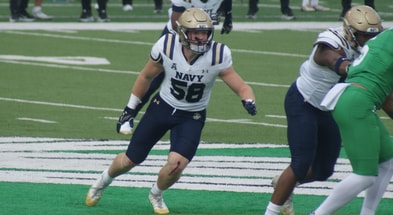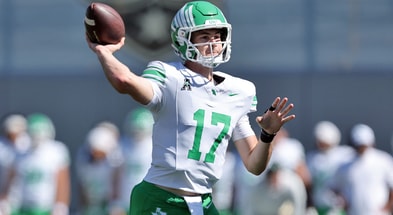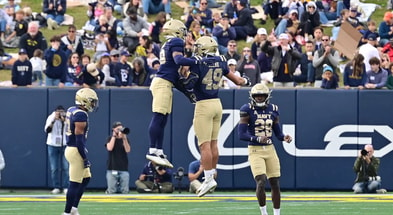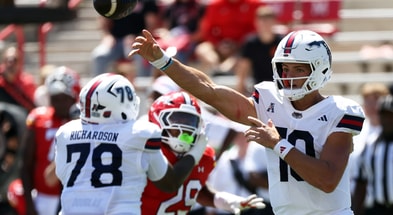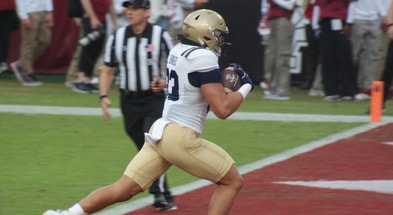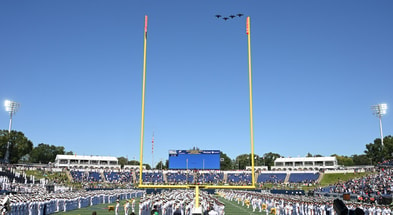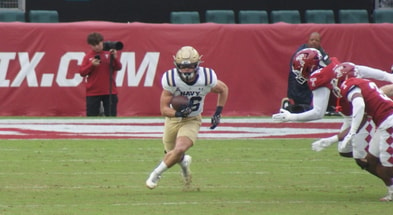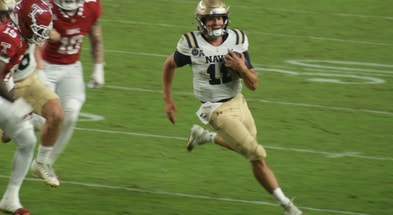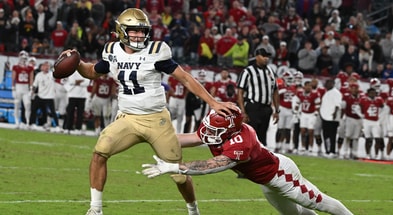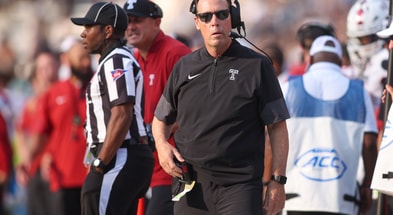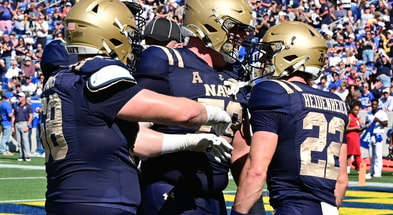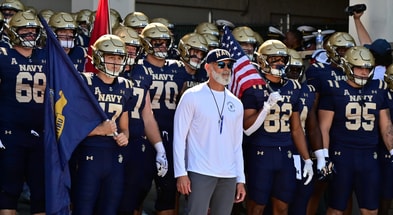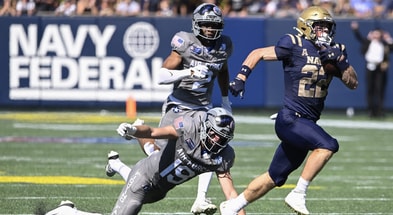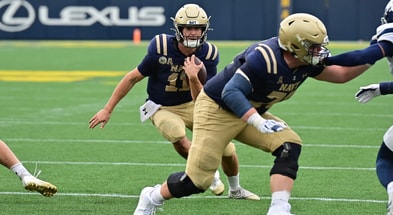The Air Force Preview
The subject of Air Force‘s turnbacks has been beaten to death. We are all familiar with the story by now. After giving players an extra year of eligibility, Troy Calhoun‘s squad had to deal with the consequences once the boondoggle ran out. The use of numerous fifth-year players disrupted the normal player development cycle, and in 2024, Air Force was the least experienced team in the country. Heading into last year’s game against Navy, they were averaging less than 10 points per game against FBS competition and had 300 yards of total offense in a game only once.
But the funny thing about a lack of experience is that the problem tends to go away the more you play. That was certainly the case for the Falcons last year. After a 1-7 start, something suddenly clicked for them. They ended the season on a four-game winning streak, including a 36-28 win over a bowl-bound Fresno State team. The much-maligned offense that had been averaging a scant 284.5 yards per game came alive to average 372 during the final third of the season. They averaged over seven yards per play in the finale against San Diego State. These aren’t explosive numbers, but they were evident progress. That’s something a team can build upon.
And yet here we are, getting ready for another Navy-Air Force game, with the Mids undefeated, but Air Force again with only one FCS win to their credit. What happened?
Someone seems to have played an UNO reverse card on Air Force. Despite the numerous problems their offense had last year, their defense was still very good. They were tops in the Mountain West in total defense, although their per-play numbers were middle of the pack. Today, though, it’s the opposite. The Falcons have one of the top offenses in the country, but their defense can’t seem to stop anyone. Air Force is second only to Boise State in the MWC in offense, putting up almost 470 yards and 37.8 points per game. Their defense, on the other hand, is one of the worst in the country. The Falcons are ranked 128th or worse nationally in scoring defense, pass defense, and total defense. The 4.8 yards per carry they allow is 109th. It’s a stark contrast to the team that hosted the Mids a year ago.
How is this possible? Air Force’s defense had been one of the most consistent in the country, finishing either first or second in the Mountain West for six straight years. And while one might point to the progress that the offense made at the end of last season to explain their sudden upswing, they lost the quarterback of that team, Quentin Hayes, when he was separated from the school. That both units could be so different just one year later is astonishing. So how could this happen?
We’ll start with Air Force’s offense, which has gone through quite the transformation. In almost every offensive category, they’re very similar to Navy, but just a shade less productive. Navy is 15th in total offense. Air Force is 20th. Navy is 24th in scoring offense. Air Force is 27th. Navy has 57 plays of 10+ yards through four games. Air Force has 52. In fact, if you adjust for strength of schedule — Air Force’s three losses have come against teams with a combined 10-5 record — it’s reasonable to believe that the Mids and the Falcons would be nearly identical statistically.
That’s not a coincidence. Navy and Air Force look alike on the stat sheet because now, they look alike on the field.
At the end of last season, I wrote about the effect Drew Cronic would have on the service academy series. From 2020-2023, Navy and Air Force never combined for more than 26 points in their games against each other. That changed last year. In 2023, Navy averaged 1.9 yards per play. Last year, they averaged 7.3. At the same time, Navy’s defense was as stingy as they’ve always been. This was a wake-up call for Calhoun. For years, each service academy had a defensive package it would pull off the shelf whenever it played one of the other academies. However, last year’s game against Navy demonstrated that the old plans were no longer effective. Air Force had to come up with a new strategy to either slow Navy down or to keep pace.
We don’t know what Air Force’s defense will look like, but looking at their offense, it’s clear that they’ve borrowed liberally from Navy’s playbook. Air Force has had four seasons of nine or more wins since 2019, and that success has coincided with them scaling back their offensive playbook and focusing more on the fundamentals of what they’ve run for decades. This year, they look like this:
It should look familiar. This is straight out of the Navy playbook, including plays the Mids used against Air Force last year.
Frankly, it makes sense that they’d go this route. One of the reasons why Navy was so effective on offense last year is that many of the changes Cronic introduced meshed well with what Navy was already doing. The same would be true for Air Force, and it’s not like Navy has a trademark on these plays. What’s good for the goose (or goat) is good for the gander (or falcon).
And just as last year’s offense made stars out of Navy players, Air Force is raking in accolades now. They played two quarterbacks for the first three games, but last week, sophomore Liam Szarka got his first start. He certainly made the most of it, throwing for 278 yards and running for 139 more. The 417 total yards were a school record for a single game. Fifth-year senior Cade Harris led the team last year with 368 receiving yards. He already has 439 this year, including a 177-yard game against Boise State. He is averaging 27.4 yards per catch. Somehow, fellow receiver Quin Smith is averaging even more, with 28.9 yards per catch. Harris is also used extensively in the running game and is averaging over seven yards per carry. He’s one of four Falcons with at least 13 carries on the season and averaging more than five yards per run.
This presents an obvious problem for the Navy defense, because now they have to find new answers for the Air Force offense. The Mids at least have an advantage in that they know what they’re up against. In the first half of last year, most of the teams on Navy’s schedule lined up against them using the same defenses that worked a year earlier. The Mids shredded those defenses, and I suspect that Air Force is reaping similar rewards against unsuspecting opponents now. Navy will be the first team they’ve faced that truly knows what’s coming. Then again, knowing the right questions to ask isn’t the same as having the answers. Even if Navy practiced against similar looks from their own offense, the playcallers are different. Navy can’t afford to get too comfortable.
Before the Rice game, I had speculated that playing two option games back-to-back might offer some benefit. Now, I’m not so sure. I think it helped in terms of mindset, emphasizing the importance of eye discipline and preparing for a physical game. But Navy just dominated Rice up front in ways that limited what they could do offensively. I do think the Navy defensive line is the best that Air Force will see this season, but I doubt the sheer physical superiority that Navy enjoyed over the Owls will be replicated. Air Force is also the most downfield-passing team in the country, averaging 13.3 yards per pass attempt, which is a stark contrast to Rice’s 127th-ranked 5.7 yards per attempt. Navy’s secondary will have a lot more to chew on. Air Force is a whole new challenge.
Of course, the same challenges that exist for Navy’s defense are there for Air Force’s defense, and then some. As close as Navy and Air Force are on the offensive stat sheet, they are miles apart defensively.
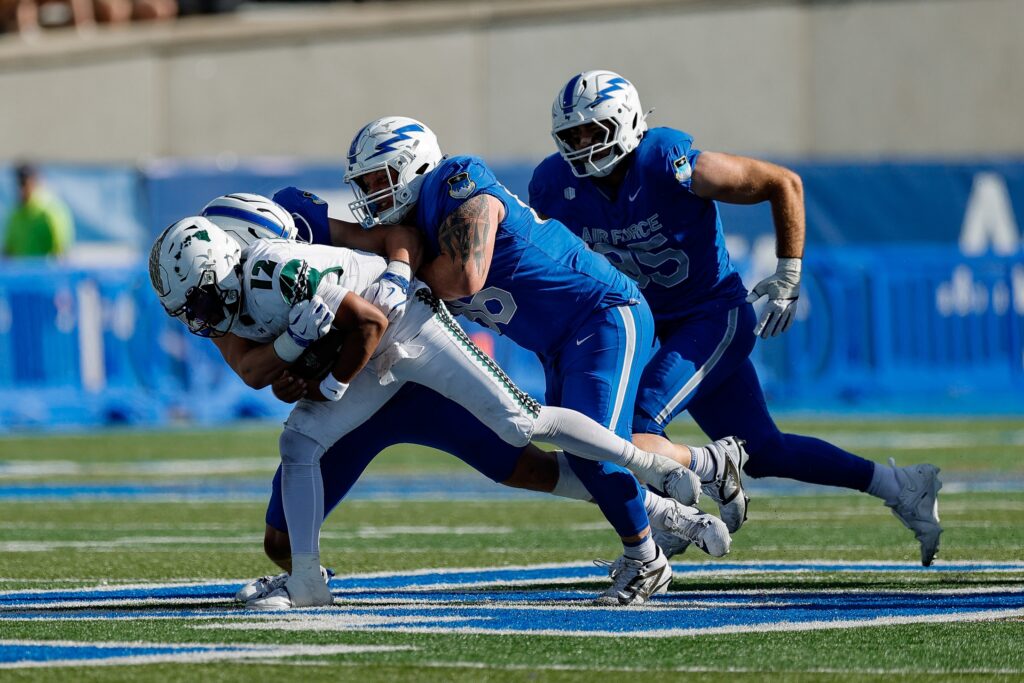
In some ways, the Falcons’ defense is the same as ever. Up front, fifth-year senior Payton Zdroik is one of the better nose guards Navy will line up against this season. He had four tackles, a TFL, and two QB hurries against Hawaii last week to back up his preseason Lombardi Trophy watch list selection. Defensive tackle Daniel Grobe is also back after starting seven games in 2024. At 6-7, 270, he presents an unusual physical challenge for offenses to overcome. Linebacker Blake Fletcher is seventh in the country with 10.5 tackles per game. Fellow linebacker Isaac Hubert is #2 nationally in TFLs per game, averaging 1.75. Sounds like an Air Force defense, right?
However, once you reach the secondary, the struggles start to make sense. Air Force uses four defensive backs and a hybrid LB-DB player they call a “Spur.” Between the five of them, they are starting four sophomores and a freshman. That’s the last thing Air Force wants to do. To give you an idea of what Troy Calhoun thinks of freshmen and sophomores, he doesn’t even list them on the roster unless they’re on the depth chart. He doesn’t let them talk to the media even when they play. Air Force is a developmental program, and they’re starting players in the earlier stages of that development.
But youth isn’t the only problem. Air Force’s four starting DBs are 5-10, 5-10, 5-10, and 5-9. Compare that to Navy, whose starting lineup in the secondary last week went 5-10, 5-11, 6-2, and 6-3. And that doesn’t include 6-1 Ira Oniha, who also rotated in at cornerback. Air Force has a harder time matching up physically, in part because the guys they expected to start this year hit the transfer portal. Lincoln Tuioti-Mariner is a 6-1 DB who had 50 tackles for the Falcons last year. He’s now at Southern Utah. Caleb Chamberlin is another 6-1 DB who now plays for Ohio. Attrition has not done Air Force any favors, and teams have taken advantage of it. The Falcons are allowing 10.2 yards per passing attempt, which is the second-to-last in the country.
One thing that doesn’t help is the fact that Air Force isn’t getting after the quarterback very much this season. They have nine sacks in four games, which seems ok until you realize that six of them came in the opener against Bucknell. They have none over their last two games. This is another area where the portal has hurt them. Last year’s sack leader for the Falcons, edge rusher David Santiago, is now wearing Michigan State green. Getting pressure on the quarterback would help the beleaguered secondary, but bringing too many pass rushers after the quarterback would leave those DBs on an island. Whatever Air Force chooses is wrong, and the result is a defense that’s giving up 533 yards per game against FBS competition.
That would seemingly give Navy the obvious advantage here. Both teams have explosive offenses, but only one has a top-30 defense. However, we’ve seen similar stories in the past, where a defense that appears weak on paper comes up with a strong option game plan. If there’s any team capable of that, it’s Air Force.
To me, that makes keeping pressure off of Blake Horvath a priority for Navy. Yes, Navy is a run-first team. But even if Air Force looks good against the run here– and that’s entirely possible, based on their front seven and their coaching experience– as long as Horvath has time to throw, receivers will get open. Despite facing the 30th-fewest pass attempts in the country, Air Force is 121st in pass plays of 10+ yards allowed. On a per-game basis, they rank 135th, with 12.25. Drew Cronic has mentioned how he hasn’t thrown as much as he planned to this season, and this game may be an opportunity to demonstrate what he originally had in mind. I would expect the Mids to throw early and often, especially if Horvath has time to pick his targets.
I also think a fast start is crucial this week. Brian Newberry says that about every game, but it has particular significance when it comes to Air Force. As good as their offense has been, one miscue on Navy’s first possession could mean that it’s already 14-0 by the time they get the ball a second time. Navy was able to dig themselves out of a hole against Tulsa, but Air Force is second in the country in second-half points per game. You don’t want to be in a position to have to come back against them. The formula against this Air Force team has been to build a lead and stay one step ahead during the furious comeback. Navy doesn’t want that shoe to be on the other foot.
Last week, there was a lot of talk about six-week exams. This game is the team’s six-week exam. While every game is essential, this is the first one where one of the team’s annual goals is at stake. Every week, we’ve seen some hiccup out of the Mids that they’ve been able to overcome, whether it’s defensive communication against UAB, turnovers against Tulsa, or penalties last week. If the Mids are going to start playing to their potential, now is the time.
